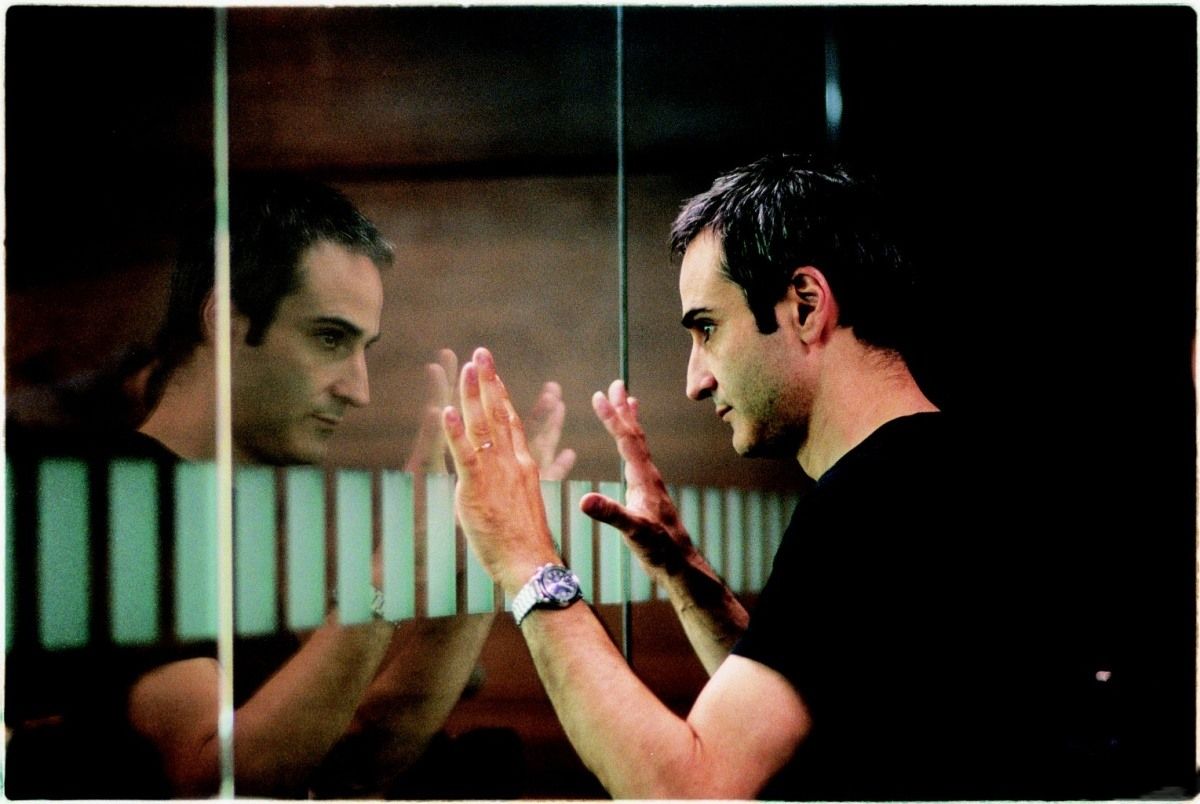The Brooklyn Academy of Music (or BAM, if you prefer its punchier moniker) have titled their Olivier Assayas retrospective “Post-Punk Auteur.” The musical connotations of that label slightly undersell the filmmaker’s eclecticism—he digs up scores of post-punk tracks, sure, but he also borrows from Malian musicians like Ali Farka Touré, ambient pioneer Brian Eno, and the Incredible String Band, to name just a few. Still, at least give BAM credit for nailing another aspect of Assayas’s cinema.
This is a guy who directs his lens toward the margins of society, who chronicles the characters of counter-culture, if you will. Rebellious teens, recovering drug addicts, misunderstood authors/auteurs, and scantily clad femme-fatales, you have a friend in Olivier Assayas. Or at least a guy who cares about you—who looks at you not with scorn or pity but with empathy, a kind that never condescends no matter how down-and-out his subjects may seem. Couple this humanism with a dynamic, often frenetic style meant to capture lives in constant motion and you have the cinema’s greatest punk-rock poet laureate of our time.
With BAM’s retrospective underway, we take a look at Assayas’s feature filmography, from the mid-’80s to recent films like last year’s “Summer Hours” and this year’s five hour epic “Carlos” (scheduled to show three nights in a row at 9 p.m. on the Sundance channel, and also opening at the IFC Center in New York in a truncated form this Friday). It’s a varied canon, and even we have differing opinions about it. But our hope is that this will at least give you the incentive to go to some of these screenings yourself, if able. All of them are worth your time.
Note: ‘Post-Punk Auteur’ runs October 9—28 @ BAM Rose Cinemas. It features all twelve of the directors feature-length narrative films (covered here), in addition to three made-for-TV documentaries (1997’s “HHH: A Portrait of Hou Hsiao-hsien”; 2006’s “Noise”; and 2008’s “Creation”) and two films not directed by Assayas that he himself selected (Philippe Garrel’s 1993 “I Don’t Hear the Guitar Anymore” and Hou Hsiao-hsien’s 1995 “Good Men, Good Women”). You can find dates and times for these screenings here.
“Disorder” (1986)
Some great filmmaker debuts carry a scrappy charm their subsequent work can’t recapture. They may be flawed and uneven, but ultimately these films play an important role in their directors’ oeuvres. “Disorder,” apart from some very dated but endearing New Wave performances (including one from the Woodentops), is not one of those films. Thematic parallels can be drawn to Assayas’s later work—youth’s uneasy transition into adulthood, for one—but mostly this is a tedious melodrama that only feigns depth. (In other words, don’t be surprised when “Disorder’s” promising opening gives way to a long slog of moping faces.) In the midst of a dreary downpour, three teens break into a music shop and find themselves face to face with its armed owner; after a brief altercation, the clerk winds up dead and the kids run into the night, his blood on their hands. The teens turn out to be members of a rising post-punk band, and a murder on their conscience is the last thing they need. Assayas, always interested in digging into the psychology of his characters, is clearly interested in the emotional fallout. But he misses his mark here. The issue is that his characters are written so devil-may-care impulsive that it’s not difficult to see their careers crashing just as badly had that one fateful night never occurred. Even the note of optimism the film closes with is vaguely unconvincing: Who’s to say that love won’t tear these depressed New Wavers apart, again? [C-]
“Winter’s Child” (1989)
Assayas’s second film is probably his most elusive. It’s not available on DVD and, like his debut and each of his films up until 1997’s “Irma Vep,” it was not shown theatrically in the U.S. Which means we’ll be seeing it with the rest of you, at its one showing on October 17th, at 7:00pm. Here’s the synopsis from BAM’s press release: “The messy, intersecting lives of two young couples are depicted in this chillingly austere film. Stéphane leaves his pregnant girlfriend for Sabine, while Sabine struggles to free herself of her attachment to a seductive yet manipulative actor. Assayas’s formalist film explores themes of identity and isolation. With Clotilde de Bayser, Michel Feller, and Marie Matherson.”
“demonlover” (2003)
Internet business corruption fuels the current number one movie in America with “The Social Network,” but it was done far better in Assayas’ slippery techno-thriller, where three women grapple with the hierarchy of a new merger to bring a prized product to the web: x-rated hentai. Connie Nielsen is steely and determined (and drop-dead gorgeous) in the lead, while Chloe Sevigny is dishy and duplicitous as the scheming assistant and Gina Gershon makes a strong impression as a fellow shark with eyes for corporate takeover. This is a world where execs discard coffee they suspect is poisoned without batting an eyelash, and the sense of paranoia adds to the unease when you realize this is essentially a twisty spy film. With its final images, Assayas uses wordless images to signify just how much global culture relies on the deadly mingling of sex and violence, while also probably forever taking himself out of the running to direct an “X-Men” picture. If you’ve seen it, you know what we’re talking about. [A-]





